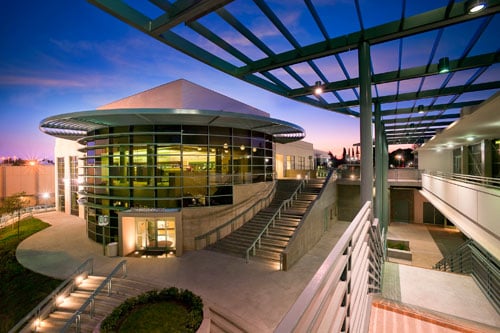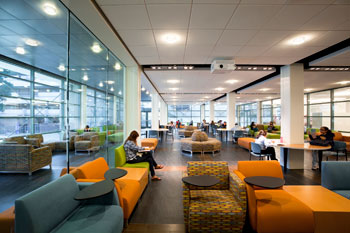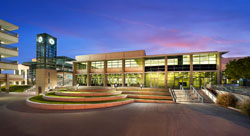Green Universities Balance Priorities
When it comes to green universities, renewable energy and photovoltaic systems are at the forefront. Especially in California, where energy costs are soaring. The sun is abundant and technology, and the price for that technology, gets better every week. Photovoltaic systems are being placed all over campuses, in parking lots, on existing buildings, on new buildings, in plazas, basically anywhere the sun shines. Many institutions prefer to have these systems installed in very visible locations to educate students and the public about the importance of sustainable design strategies.
 During the last couple of years, we've seen a paradigm shift in the mind set of administrators, presidents, chancellors and in the higher education sphere in general. They are starting to see the importance, as educators, of being leaders in providing sustainable solutions and setting a conservation first example in their communities.
During the last couple of years, we've seen a paradigm shift in the mind set of administrators, presidents, chancellors and in the higher education sphere in general. They are starting to see the importance, as educators, of being leaders in providing sustainable solutions and setting a conservation first example in their communities.
They are not adopting "green priorities" with a few key features. Instead they are attacking the problem holistically and with enthusiasm. This is not limited to the design of new facilities, universities and colleges are being proactive in modifying and replacing existing, inefficient equipment and systems to save energy and improve the quality of their campuses both inside and out. This all-embracing approach is the culmination of a snowball effect. Several years ago there were a few institutions providing select green strategies. Then, more campuses began to come on board. Before we knew it, everyone was doing it and doing it with passion. In today's market it's no longer about the next green priority it's about adding to the already large, environmentally friendly snowball.
 CODES, STANDARDS AND LEED
CODES, STANDARDS AND LEED
In general the beauty of LEED and sustainable design is that they will always exceed building codes and standards set by state and federal agencies. When planning and designing higher education facilities we use codes and standards as bare minimum levels of project performance and encourage our clients to exceed them as much as practically possible, and as budgets allow.
LEED criteria, regardless of LEED certification, provides a valuable frame work for design concepts and solutions and is also a great checklist for measuring the success of a project's design. Award winning designs were often left to the judgment of a select few based purely on subjective opinion ... now we have sustainable quotients as a prerequisite for good design and award winning projects.
 IN SUPPORT OF THE LEARNING ENVIRONMENT
IN SUPPORT OF THE LEARNING ENVIRONMENT
In the 2008 summer Olympics in Beijing, China the Birds Nest Stadium and the Water Cube Aquatics Center were the focal points of the games. These two structures provided more than just a venue for sporting events, they provided a unique and exciting experience.
If we design beyond functional requirements we can provide unique and exciting spaces and "create value" in the educational experience.
Administrators and educators understand now, more than ever, the importance of creating value in all academic and non academic spaces on campus. In the past some institutions only considered quantity as an identifier of required needs. Head counts and classroom space were the only important issues to consider. They are still important, and make funds available for improvements and additions to universities and colleges, but the difference today is the importance of balancing the practical and the poetic as a holistic campus that provides a quality lifestyle, in addition to a quality education.